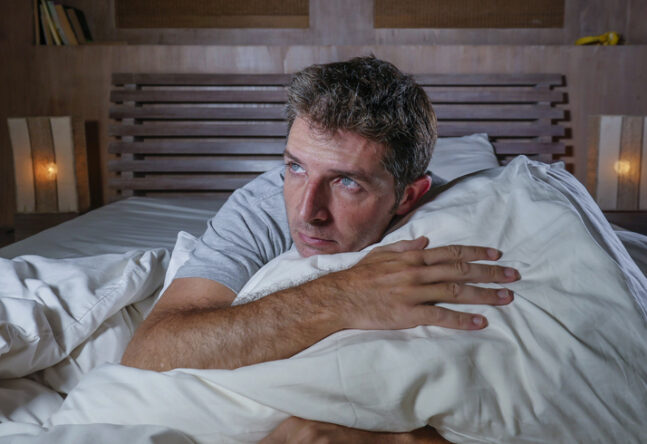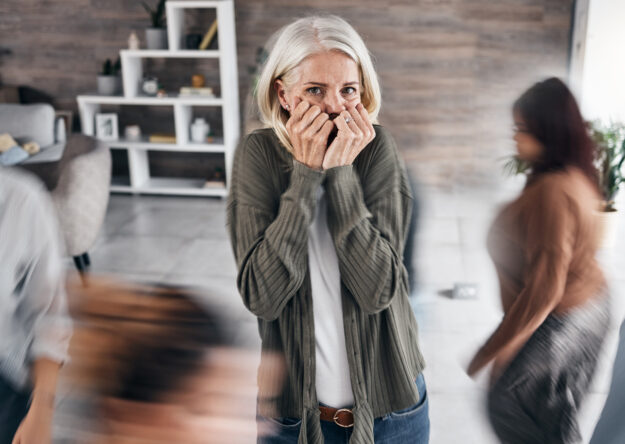When people hear the word “flashback,” they often think of vivid, movie-like memories.

However, emotional flashbacks are different. They don’t always come with clear images or scenes from the past—instead, they feel like sudden emotional storms that don’t match the present moment. Often linked to complex trauma or childhood emotional neglect, emotional flashbacks can leave you flooded with feelings that are intense, confusing, and hard to explain. Here’s what you need to know about them, how they show up, and how to start recognising them for what they really are. (Also, know that if you’re struggling with them, you shouldn’t hesitate to talk to someone you trust, see a therapist, or even ring Samaritans at 116 123.)
1. Emotional flashbacks are intense feelings rooted in the past.

An emotional flashback is when your body reacts as if you’re reliving a past emotional wound, even though nothing obviously traumatic is happening in the present. You might suddenly feel overwhelming shame, fear, helplessness, or rage with no clear trigger.
These responses are usually tied to earlier experiences, especially those from childhood, that left an emotional imprint. Your brain and body remember the emotion, even if your mind doesn’t consciously recall the event.
2. They often show up without warning.

One of the hardest parts about emotional flashbacks is that they seem to come out of nowhere. You might be having a normal day and suddenly feel like everything is too much. The emotions are real, but their intensity doesn’t seem to match the situation. Because there’s no obvious “reason” for the emotional flood, people often blame themselves, thinking they’re overreacting. In reality, it’s their nervous system reacting to a perceived (though invisible) threat.
3. They don’t always come with clear memories.

Unlike traditional PTSD flashbacks, emotional flashbacks often happen without images or specific memories attached. You might not recall a single event—you just feel emotionally hijacked in a way that doesn’t make logical sense. This makes them harder to recognise and validate. But the absence of memory doesn’t mean the experience isn’t valid. The emotions are real, and they’re often your body’s way of surfacing something that was never processed properly.
4. Shame is a common emotional flashback theme.

Many people with complex trauma report sudden waves of shame, self-loathing, or the feeling that they’ve done something wrong, even if they haven’t. It’s like being pulled into a familiar emotional script without warning. Shame-based flashbacks are often tied to childhood environments where love was conditional or where criticism was constant. When triggered, the body responds as if it’s back in that powerless, disapproved-of state.
5. Emotional flashbacks are often misdiagnosed as mood swings.

Because emotional flashbacks can look like anxiety, depression, or irritability, they often get mistaken for personality traits or mood disorders. However, the root issue isn’t your personality—it’s unprocessed emotional history showing up in the present. When these reactions are understood in the context of trauma, the approach to healing changes. It becomes less about suppressing symptoms and more about understanding the emotional roots behind them.
6. They’re tied to your fight, flight, freeze, or fawn responses.

Emotional flashbacks often trigger your survival system. You might feel the urge to escape (flight), shut down (freeze), get angry (fight), or immediately try to please other people to stay safe (fawn). These reactions aren’t random; they’re survival strategies your body learned early on to navigate emotional danger. Recognising your go-to response can help you spot a flashback as it’s happening and respond with more awareness.
7. They can make you feel “too much” without knowing why.

In the middle of an emotional flashback, you might feel highly reactive, hypersensitive, or emotionally raw. You might even feel embarrassed after the fact, unsure of why you felt so intense in the moment. This can lead to self-criticism or isolation. Of course, the truth is that you’re not broken—your emotional response is real, and it’s likely connected to a much earlier wound that’s asking to be seen, not shamed.
8. Certain people or situations can trigger them.

You might not always know why a flashback happened, but often, it’s triggered by something subtle—tone of voice, facial expressions, rejection, conflict, being ignored, or even kindness you’re not used to. Your body recognises these cues as similar to past emotional threats, even if you consciously don’t. Learning to track your triggers can help you create more safety and self-compassion in the moment.
9. You may feel younger or helpless during one.

Emotional flashbacks often come with a strange sense of age regression. You might feel like a child again—powerless, scared, or desperate for comfort. This emotional state doesn’t reflect who you are now; it reflects who you were when the original wound happened.
This can be disorienting, especially for high-functioning adults who feel confused by their sudden neediness or vulnerability. However, it’s not weakness. It’s an emotional memory being replayed, asking to be met with care.
10. They often make you withdraw or shut down.

When you’re in the middle of a flashback, you might retreat emotionally, mentally, or physically. Social situations suddenly feel too intense. Conversations feel risky. Even eye contact can be hard. That shutdown is your body trying to protect you from what it sees as danger. If you find yourself pulling away without knowing why, it might not be avoidance. It could be an emotional flashback trying to buffer you from pain.
11. They don’t mean you’re “regressing”—they mean you’re carrying something heavy.

It’s easy to feel ashamed for reacting strongly to what seems like a small trigger. You might judge yourself for being too sensitive or dramatic, but emotional flashbacks aren’t childish reactions—they’re old wounds that never got the safety they needed. They don’t mean you’re weak or broken. They mean your nervous system still remembers what it felt like to be emotionally unsafe, and it’s asking for understanding, not more suppression.
12. Learning to spot them is the first step toward healing.

The more you learn to recognise when you’re in an emotional flashback, the less power it holds. You start to catch the signs earlier: the sudden shame, the urge to flee, the mental fog. Suddenly, you realise that it’s not what’s happening right now. As time goes on, that awareness allows you to pause, ground yourself, and respond from the present rather than react from the past. That change is where healing begins—not by erasing what happened, but by reclaiming how you respond to it.




